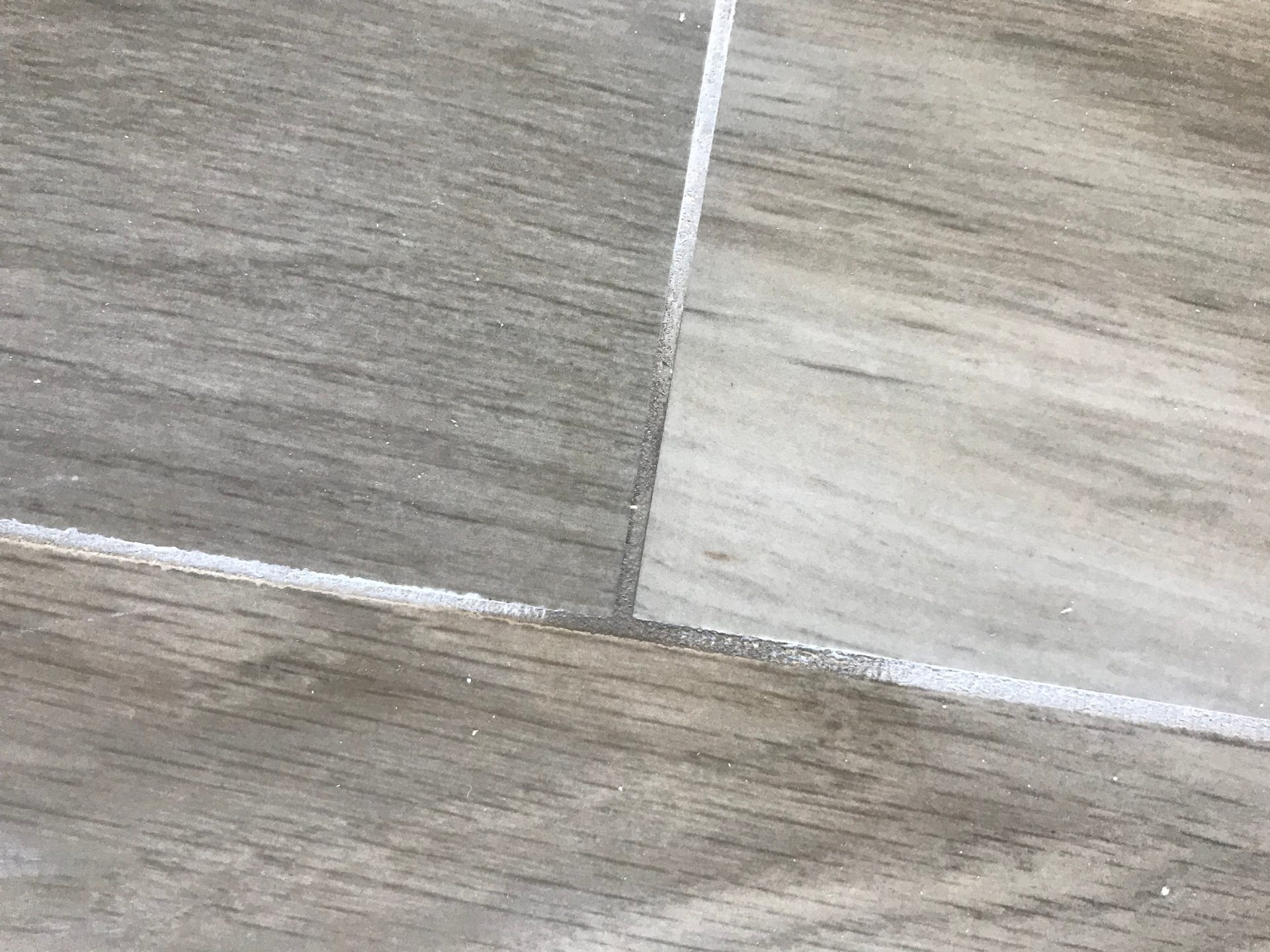Three Grout Grievances and How to Avoid Them
By John McIntyre
Haste, fatigue and misunderstanding might lead installers to overmix, overwater, overwash or clean the grout too soon, which can cause cracking among other things. Photo: SikaTile.
Tile installers start to see the finish line of a project when they break out the grout. It’s the step where they begin to see the complete picture of their effort. However, it’s the grout that will most likely have installers called back to a project to fix. Since grout serves in both function and appearance, it has two fronts it can lose on. Let’s look at three leading issues that grout can cause and how to abate them.
Efflorescence
When a customer calls you back to a site after a couple of weeks, asking why their beautiful installation now has whitish blotches on the grout, they’re likely dealing with efflorescence. Efflorescence is a crystalline deposit of salts that can form when water is present in or on building surfaces. It’s generally white or grey and consists of salt deposits that remain on the surface once water evaporates.
Three conditions must be present for efflorescence to form. First, there must be water-soluble salts. Salts like sodium sulfates (Na3SO4) and potassium sulfates (K2SO4) are present in grout, making them ideal contributors to efflorescence. Second, there must be sufficient moisture to dissolve these salts. As you know, water is essential for Portland-cement grouts to mix and form, further making them ripe for efflorescence. Third, there must be capillaries for the soluble salts to migrate. Grout’s drying process creates tiny, permanent capillaries in the product that allow the mixing water (and accompanying salts) to escape. With all three factors present in grout, it is an ideal generator for efflorescence. Remove any one of these factors and efflorescence is averted.
To help installers avoid getting calls for efflorescence, grout manufacturers have worked to strip causing factors from their materials. High-performance (ANSI A118.7) products like SikaTile-815 Secure Grout sidestep the factors altogether. It has an extremely compact structure with different grain sizes of both cement and sand modified with special polymers and hydrophobic agents. These agents render the grout salts insoluble, making them unable to be transported to the surface and preventing efflorescence.

Efflorescence is a crystalline deposit of salts that can form when water is present in or on building surfaces and is generally white or grey. Photo: SikaTile.
Staining and Discoloring
Cementitious grouts are highly porous, and these pores need to be sealed. Even with sealers, the grouts are susceptible to discoloration and staining. Industrial spaces where a variety of harsh chemicals come into contact with tile can lead to serious discoloration. Grout can also become severely stained in food processing areas, breweries, commercial kitchens and aseptic areas. Even household cleaners can have a detrimental effect on grout’s appearance. Fortunately, there are two solutions to this problem.
For stained cementitious grout, there are products on the market that can revitalize grout’s appearance. Items like SikaTile-890 Revive is a ready-to-use, low-cost solution that restores tile’s appearance without replacing the installation or regrouting. The easy-to-use urethane acrylic formula brings out day-one grout color while sealing sanded and unsanded grout joints. It supplies a natural, uniform color that is highly resistant to stain, wear, sunlight, water and extreme temperatures.
For those who want to remove staining from the equation altogether, high-quality epoxy grouts are the way to go. A good 100%-solids epoxy grout and mortar combination like SikaTile-825 Epoxy Grout is a three-component formula that is used in grout joints 1/16” (1.5 mm) to 3/8” (10 mm) wide. Colored quartz technology delivers permanent, consistent tone to tile installations exposed to a wide range of damaging agents.

For stained cementitious grout, there are products on the market, like SikaTile-890 Revive, that can revitalize grout’s appearance. Photo: SikaTile.
Improperly Mixed Grouts
Whenever a process is involved, the danger of human error exists. Grout manufacturers include exhaustive, detailed instructions on their products to ensure installers get the best results. However, haste, fatigue and misunderstanding might lead installers to overmix, overwater, overwash or clean the grout too soon. These can cause cracking, blotchy and/or powdery grout. The grout may form pinholes, or the grout joints themselves can end up lower than they should be. It can also noticeably affect the color consistency of grout between mixes.
Ready-to-use materials like SikaTile Ultima Grout take all the guesswork out of grouting. It is factory ready straight from the pail with no additives or mixing required. The professional-grade product is easy to use, resealable and guarantees color consistency from pail to pail. Also, it is easily cleanable and does not require sealing, making the product a huge timesaver for projects on tight deadlines.
Find Your Grout Groove
Your grouting can speak volumes about your workmanship as a tiler. It can also be the first indicator of trouble for an installation. There are plenty of solutions on the market to alleviate your grout grievances. Always have a complete understanding of your job conditions and work with a manufacturer determined to maximize your results.
John McIntyre is a National Technical Manager for Sika. His construction professional experience began in his teens and has taken him through all avenues of the tiling industry. Following nearly a decade in tile materials distribution and manufacturing, McIntyre served in technical sales for tile setting materials manufacturer Merkrete until 2020. Aside from his duties at Sika, McIntyre devotes his time evaluating CTIs for CTEF.
